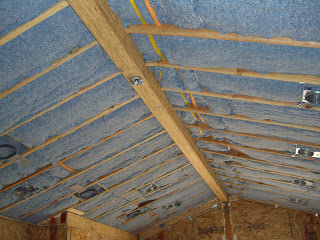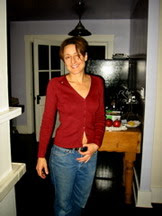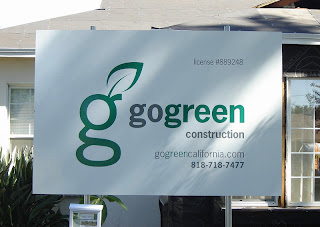Once work on the addition got underway, the homeowners opted to implement a green remodel of the entire structure. This enabled them to make several decisions affecting the structure as a whole; for one, they wisely chose to insulate not only the exterior walls with Ultratouch recycled denim insulation – they insulated the interior walls as well, further stabilizing indoor temperatures and adding a measure of privacy: the denim will effectively deaden sound between the rooms in the house.
To further conserve Southern California’s precious water supply, we installed three dual-flush Toto toilets with flushing options for liquid or solid waste. One of the bathrooms will feature glass bricks to maximize privacy and admit natural light, and the master closet will be outfitted with a Solatube skylight to utilize available light when possible, cutting energy demand in those rooms.

Throughout the home we have installed double-paned windows to reduce temperature fluctuations due to outside weather conditions. The windows are glazed with a low-e coating, a microscopic layer bonded to the glass surface which filters infrared and ultraviolet rays from passing through. This keeps heat out during the summer and keeps UV rays off your furnishings and artwork, preventing fading and sun damage.



























